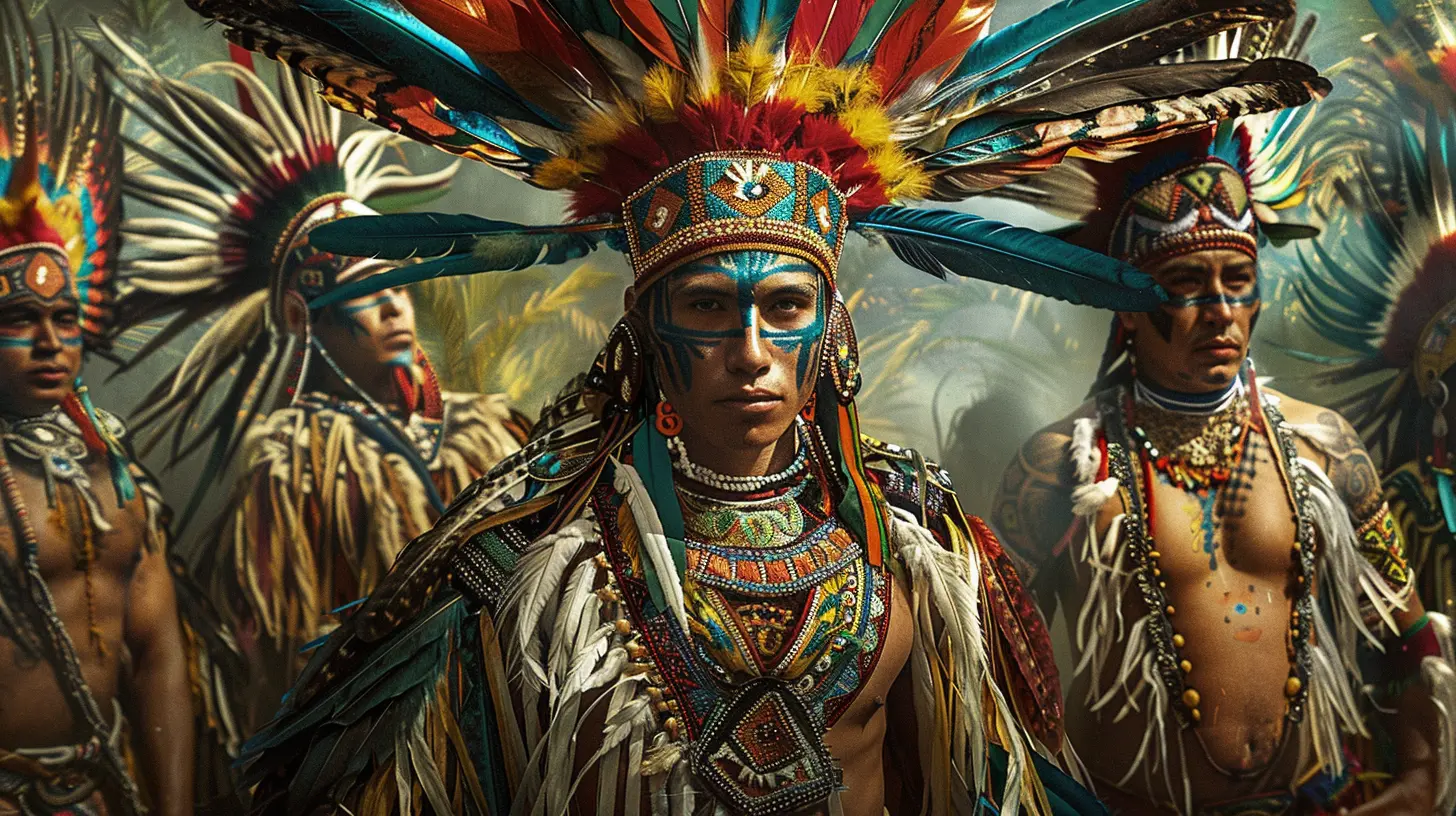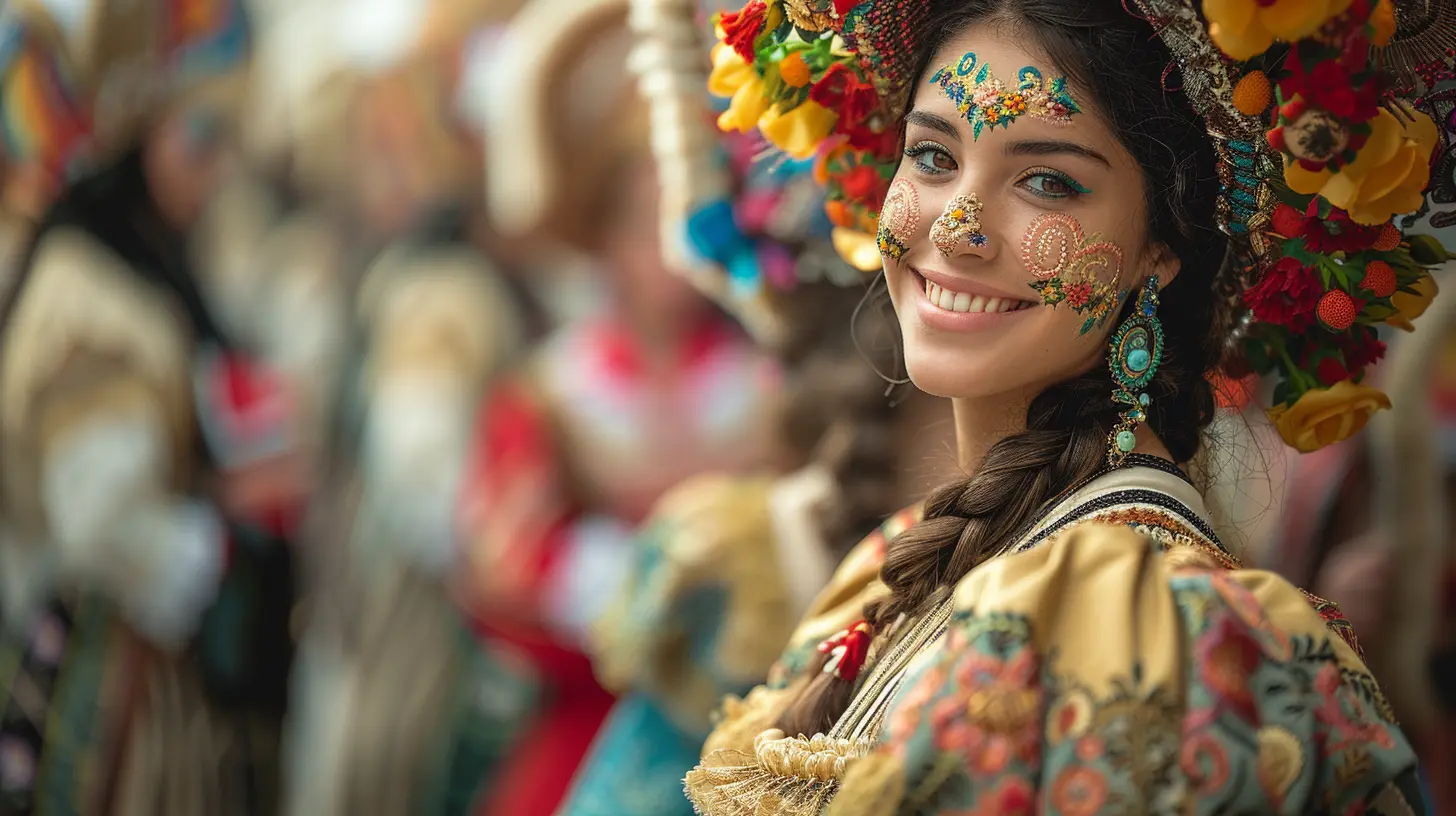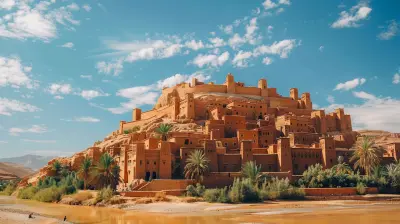An Ode to Ancestry: Festivals That Honor the Past
30 August 2025
Let’s face it—this world moves fast. We're constantly running toward the future, plugging into tech, soaking up trends, and losing track of quiet moments. But every so often, people pause. They look back. They remember. Across the globe, cultures come together in rich, colorful celebrations that don't just nod to the past—they dance with it, sing to it, and embrace it with open arms.
Welcome to a journey through festivals that honor ancestors—those who came before us, shaped our roots, and whose footsteps still echo in our lives today. Whether you're a curious traveler, an old-soul history buff, or simply someone looking to reconnect with something deeper, these festivals offer more than just spectacle. They offer soul.

Why Do We Celebrate The Past Anyway?
Before we dive into confetti, incense, firecrackers, and face paint, let’s ask the big question: why all this fuss about the past?Well, think of ancestry like a tree. Your roots feed your present. The deeper and stronger they are, the more resilient you become. Celebrating the past is a way of remembering those roots—keeping them nourished. These festivals aren’t just nostalgic walk-throughs; they’re reminders of who we are, where we come from, and what values were passed down like precious heirlooms.
Plus, let’s be honest—it’s nice to pause and remember that we’re part of something bigger than ourselves.
Now, let’s take a trip around the world, diving into vibrant traditions that beautifully honor ancestry. 
1. Día de los Muertos – Mexico’s Bright Embrace of the Afterlife
If there’s one festival that wears its heart—and its skeletons—on its sleeve, it’s Día de los Muertos, or Day of the Dead. But don’t let the skulls fool you; this isn’t about mourning. It’s a celebration, loud and proud.Held on November 1st and 2nd, this Mexican tradition is a fiesta of remembrance. Families build “ofrendas” (altars) decorated with marigolds, sugar skulls, candles, and the favorite foods of their departed. The idea? Invite ancestors to visit, and throw them one heck of a welcome party.
It’s not spooky—it’s soulful. Cemeteries turn into hubs of laughter, music, and storytelling. People paint their faces like skulls to honor the cycle of life and death, not to fear it.
Still think talking about the dead is morbid? Not here. In Mexico, death is seen as part of the journey, and Día de los Muertos is a reminder that love outlasts even the grave. 
2. Obon – Japan’s Lantern-Lit Reunion with Spirits
Let’s float over to Japan, where tradition and tenderness meet in a glowing celebration known as Obon. Usually held in mid-August, Obon is a time when families believe the spirits of their ancestors come back home for a visit.People light “mukaebi” (welcoming fires) at their doorways to guide the spirits in. They clean family graves, offer food at altars, and gather together for the iconic Bon Odori—a joyous folk dance that brings everyone together, old and young.
As the festival ends, floating lanterns are set adrift in rivers and the sea—a gentle goodbye, guiding the spirits back to the other world. The sight? Pure magic. It’s like stars swimming on water.
Obon isn’t flashy; it’s serene, respectful, and deeply emotional. And in its quiet beauty, it whispers something universal: Our ancestors never truly leave us. 
3. Qingming Festival – China’s Day of Sweeping and Sincerity
Next stop: China. Here’s where Qingming Festival, also known as Tomb-Sweeping Day, comes into play. Held around April 4th or 5th, it’s both practical and poetic.On this day, families hike up to ancestral burial sites. They sweep tombs, remove weeds, and make offerings like tea, wine, and favorite dishes of the deceased. Some even burn joss paper, folded to resemble money or household items—an offering believed to be useful in the afterlife.
It’s not about pageantry. Qingming is humble. It’s about paying respects, expressing gratitude, and keeping traditions alive, one broomstroke at a time.
There’s something grounding about it. You get to walk the same paths your ancestors did, literally. You sweat, you clean, you remember. It’s history with elbow grease.
4. Pitru Paksha – India’s Fortnight of Ancestral Honor
India does reverence like no other. Deeply spiritual and symbolic, Pitru Paksha is a 16-day festival in September or October dedicated to honoring ancestors through prayer, food offerings, and rituals.The belief? During these days, the spirits of ancestors come closer to the earthly realm. To support them in their spiritual journey, families perform “Shraddha” rituals—offering cooked meals, usually including rice, lentils, pumpkin, and specially prepared balls of rice called “pindas”.
It’s not about extravagance. It’s about duty, love, and an unbroken chain of memory. And there’s a hidden beauty in that humility.
In India, honoring ancestors isn’t a one-off party. It’s a sacred responsibility passed down generations. Through Pitru Paksha, families say—we still remember, we still care.
5. The Royal Ancestor Ceremony – A Sacred Tribute in Vietnam
In Vietnam, the art of ancestor veneration runs deep, and perhaps nowhere is this more vivid than in the Royal Ancestor Ceremony in Hue. Held twice a year, this ceremonial gathering is a grand homage to the Nguyen Dynasty’s emperors.Performed at the Thien Mu Pagoda and The Mieu Temple, it features traditional music, incense offerings, and dancers clothed in imperial regalia. Everything—from the chants to the choreography—is designed to show respect and reflect the continuity of lineage.
For locals and history lovers alike, this festival is like stepping into a time capsule. It’s pomp meets purpose, where the past is honored not as distant folklore, but as a living part of cultural identity.
6. Gai Jatra – Nepal’s Cow-Led Memorial Parade
You read that right—cows lead the parade in Gai Jatra, Nepal’s festival to honor departed souls. “Gai” means “cow,” and in Hindu belief, cows help guide souls into the afterlife.Held in August or September, Gai Jatra is a beautiful blend of grief and celebration. Families who have lost a loved one in the past year participate in parades, dressing up in colorful costumes, singing, and making satirical jokes.
It's part procession, part therapy. The laughter is healing, the music cathartic. And the cow? She’s more than an animal—she’s a sacred bridge between worlds.
What’s striking is the honesty. Gai Jatra says it’s okay to mourn, to laugh, to remember—and to accept that life and death exist on the same thread.
7. All Saints’ and All Souls’ Day – Europe’s Gentle Reflection
In many parts of Europe—from Poland to Portugal—November 1st and 2nd are set aside as All Saints' Day and All Souls' Day. These Christian holidays may seem quiet compared to others, but they’re deeply rooted in respect.People visit cemeteries, light candles, and place flowers on the graves of loved ones. The soft glow of thousands of flames lighting up a dark cemetery? It’s a sight that warms the heart, even on the coldest nights.
In places like Lithuania and Slovakia, these days are major cultural events. Graveyards fill with families, sharing stories, laughter, and sometimes even picnics by the headstones.
Though the mood is hushed, make no mistake—these days are powerful. They remind us that even in silence, memory speaks volumes.
What’s the Common Thread?
You might be wondering—how do festivals from such different places feel so similar? Different languages, foods, and rituals, yet they all touch the same heartstring.Here’s the secret: it’s that universal longing to connect. To say thank you. To pass on stories. To remember that we didn’t spring into existence alone—we're built from someone’s sacrifice, someone’s love, someone’s dream.
And that, friend, is what makes these festivals timeless.
How Can You Be Part of It?
Maybe you’re thinking, “That all sounds amazing, but what if I don’t have a cultural or family festival like this?”Good news—you can create your own way to honor ancestry. Light a candle. Cook grandma’s recipe. Visit an old family cemetery. Share stories over dinner.
Or better yet, travel. Attend these festivals. See how other cultures cherish memory. You’ll come away with more than souvenirs—you’ll collect wisdom.
And hey, maybe that’s the best part of travel: it stretches your heart across the world and somehow brings it closer to home.
Final Thoughts: The Heart Will Always Remember
When we remember the past, we enrich the present. These festivals aren't just days marked on calendars—they're bridges. Between generations. Between cultures. Between life and death.They remind us that even when names fade from photos and stories lose their sharpness, love is still passed down like a handwritten letter in aged ink.
So next time you hear the beat of a drum, see a candle flicker by a gravestone, or taste a dish you haven’t had in years—pause. Listen. That, my friend, is the sound of history whispering… and it’s beautiful.
all images in this post were generated using AI tools
Category:
Cultural FestivalsAuthor:

Tracie McAdams
Discussion
rate this article
1 comments
Nixie Bowman
These festivals provide a meaningful connection to heritage, celebrating traditions that enrich our understanding of history and cultural identity.
August 30, 2025 at 3:11 AM

Tracie McAdams
Thank you! I completely agree—these festivals truly celebrate our rich heritage and deepen our appreciation for cultural identities.


